RESOURCES
Updated: 2025-10-18 09:38( HK edition )
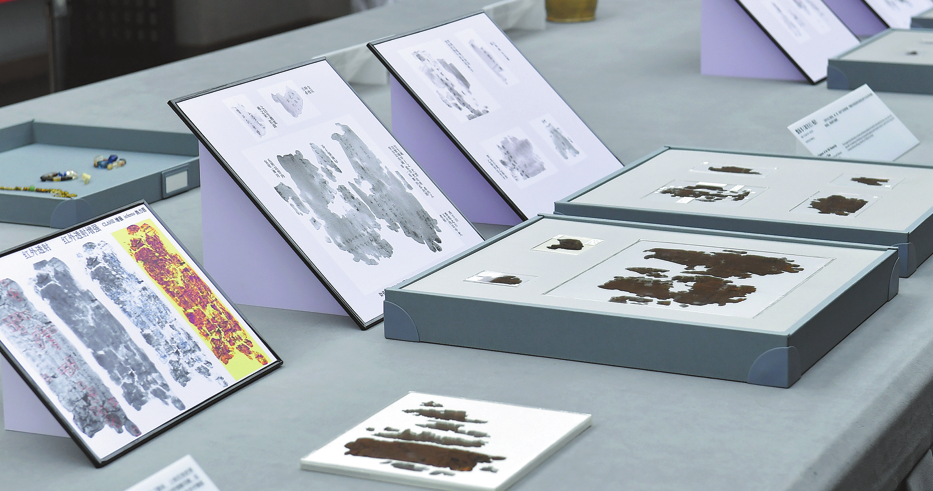
Two volumes of the Zidanku Silk Manuscripts will be archived in the Hunan Museum. XINHUA
Two volumes of an ancient Chinese silk manuscript illegally taken overseas 79 years ago have returned to their home in Changsha, Central China's Hunan province.
A ceremony was held at the Hunan Museum on Monday to mark the official repatriation of Volumes II and III of the Zidanku Silk Manuscripts, titled Wuxing Ling and Gongshou Zhan respectively. They will be permanently archived in the museum.
The manuscripts, the earliest Chinese silk texts discovered, and the only known ones from the Warring States Period (475-221 BC) found in China, are named after the Zidanku area of Changsha, from where they were stolen by grave robbers in 1942, before being smuggled to the United States in 1946.
The 2,300-year-old manuscripts, comprising over 900 characters, are the earliest known examples of a classical Chinese book in the true sense, playing a crucial role in the study of ancient Chinese characters and historical documents.
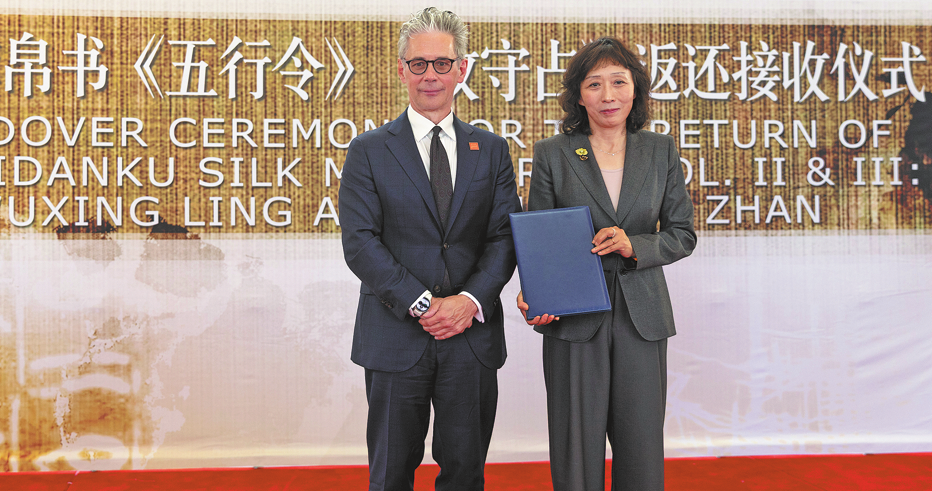
Zhu Ye, deputy director-general of Office for the Recovery and Restitution of Lost Cultural Property, National Cultural Heritage Administration of China, and Chase Robinson, director of the Smithsonian Institution's National Museum of Asian Art, attend the ceremony for the return of the manuscripts in Washington, DC on May 16. XINHUA
After nearly eight decades overseas, two volumes were handed over by the Smithsonian Institution's National Museum of Asian Art in the US and transferred to China's National Cultural Heritage Administration in May. Volume I, titled Sishi Ling, is privately owned and preserved in the Arthur M. Sackler Gallery in Washington, DC.
The return of these manuscripts is a significant achievement, resulting from years of collaboration between China and the US in the fields of culture and museums. It sets an example for international cooperation in artifact restitution, Rao Quan, head of the National Cultural Heritage Administration, said at the ceremony on Monday.
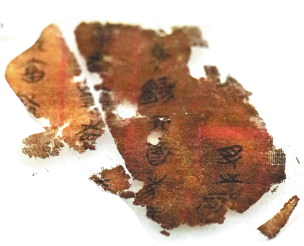
The 2,300-year-old manuscripts, comprising over 900 characters, are the earliest known examples of a classical Chinese book in the true sense, playing a crucial role in the study of ancient Chinese characters and historical documents. XINHUA
Chase Robinson, director of the Smithsonian Institution's National Museum of Asian Art, says the decision to transfer the manuscripts to China demonstrates the museum's firm commitment to jointly preserving humanity's cultural heritage and its long-standing tradition of collaboration with Chinese cultural institutions.
The administration decided to return the manuscripts to Hunan after thorough consideration and extensive discussions, Rao says.
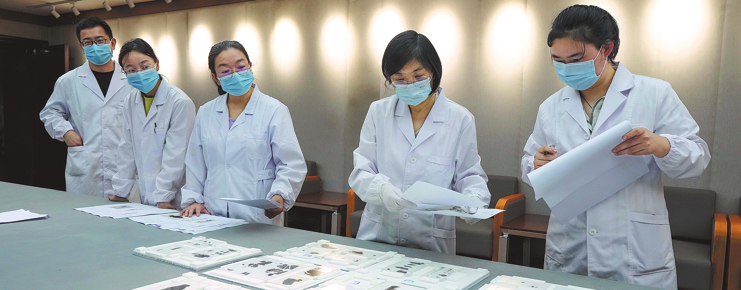
Experts verify the fragments of the silk manuscripts at the Hunan Museum. XINHUA
After the manuscripts arrived at the Hunan Museum in September, they underwent a 14-day environmental adaptation observation period and are now preserved in a stable environment with precise temperature and humidity controls, according to the museum.
A holographic data collection project was established to create digital imaging of all texts on the manuscripts. After a high-resolution scan, more than 40 ink-written characters, invisible to the naked eye, were found on one large piece of the manuscript remnants that had not been fully separated from the others.
"We believe the newly found words belong to Wuxing Ling (Volume II)," says Yu Yanjiao, a researcher at the Hunan Museum. Some characters, such as those referring to vessels and food containers, are identical to the ones in the known Wuxing Ling text, she says.
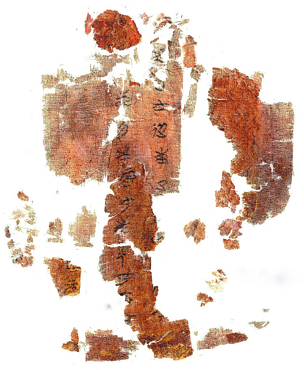
The 2,300-year-old manuscripts, comprising over 900 characters, are the earliest known examples of a classical Chinese book in the true sense, playing a crucial role in the study of ancient Chinese characters and historical documents. XINHUA
This volume discusses taboos and auspicious times for travel throughout the year, while Gongshou Zhan (Volume III) guides military actions by predicting the most advantageous times to launch attacks or defend cities, Yu explains.
Despite the promising discoveries, significant challenges remain in the conservation and research of the manuscripts.
Volumes II and III are in poorer condition compared to Volume I, being significantly more fragmented, with some pieces tightly folded and stuck together, says Liu Zhao, a professor of ancient texts and the director of the Center for Research on Chinese Excavated Classics and Paleography at Fudan University in Shanghai.
"The most critical task now is the scientific detachment of these fragments, ensuring no damage occurs, so that the hidden texts can be fully revealed," Liu says.
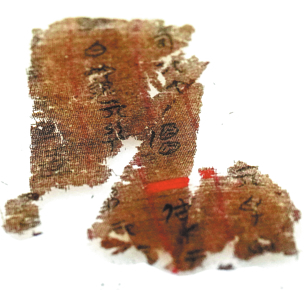
The 2,300-year-old manuscripts, comprising over 900 characters, are the earliest known examples of a classical Chinese book in the true sense, playing a crucial role in the study of ancient Chinese characters and historical documents. XINHUA
Once the fragments are separated, they need to be analyzed and carefully pieced together like puzzles to help researchers identify more characters in context, forming a necessary foundation for deeper research, he adds.
The two volumes of the manuscripts consist of more than 500 fragments, posing a significant challenge for their preservation and research, Yu of the Hunan Museum says.
An immediate priority is to conduct a "medical checkup", a comprehensive scientific assessment of the manuscripts to better understand their condition, Yu says, a process that requires experts from many disciplines, including chemistry and materials science.
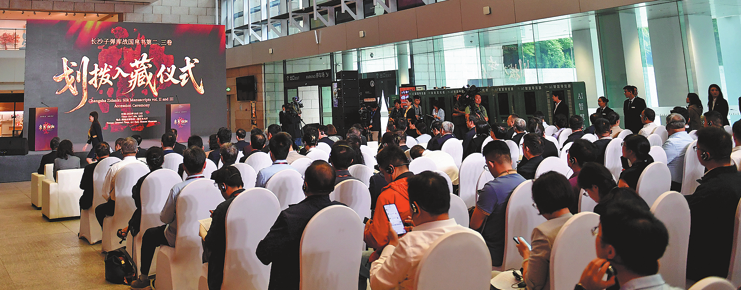
The museum says that it will keep scholars worldwide informed about research developments regarding the manuscripts and welcomes international collaboration to explore new approaches to their conservation.
An exhibition based on the manuscripts is scheduled to be held at the museum next year, to mark the anniversary of their return, Yu says. It will feature not only the manuscripts but also other artifacts unearthed from the same tomb, including jade, pottery and paintings. Related archives on the manuscripts' origin and the latest research findings will also be presented, offering a comprehensive perspective to the public.
Like many others, Liu, the Fudan University professor, remains concerned about Volume I of the manuscripts, the best-preserved of the three volumes, which is still in the US.
"The return of the two volumes sets a meaningful precedent, which we hope will lead to the repatriation of other significant Chinese cultural relics currently dispersed abroad," Liu says.
"We hope Volume I can come home soon and reunite with the other two volumes."
Zhu Youfang in Changsha contributed to this story.